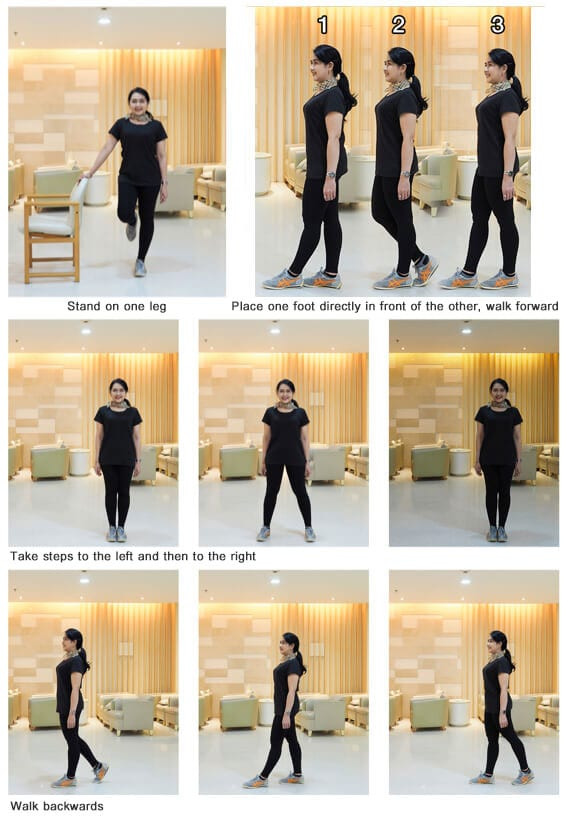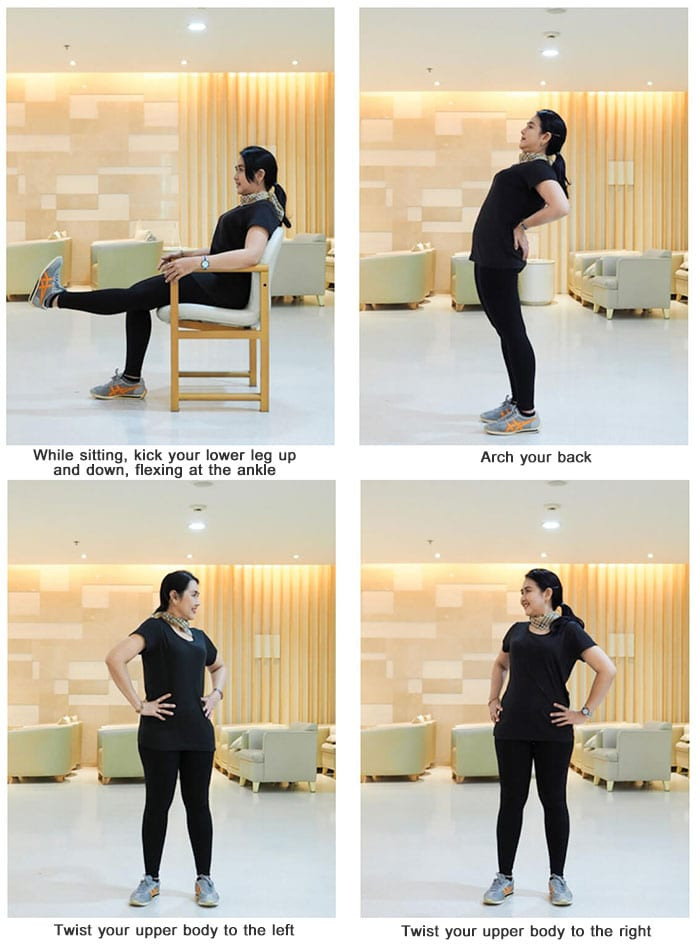
HIGHLIGHTS:
- Older adults aged 60 and over have an increased risk of falls.
- Older adults must practice and manage their balance skills and work to increase muscle strength in order to strengthen the body and prevent potential accidents.


As we get older, aging and degeneration begin to affect the functioning of our body systems, such as the visual system, nervous system and musculoskeletal system. Degeneration of these systems will cause a gradual decrease in strength, as well as a decline in balance abilities, thus increasing the risk of falls.
Falls, of course, bring a number of additional risks with them, such as broken or fractured bones, spondylolisthesis (when a spinal vertebra slips over the one below it, causing nerve roots to be squeezed) and other disabilities. It’s therefore extremely important to undergo balance testing in order to determine the level of risk of falls in elderly patients.
Timed Up and Go Test (TUG)
Note: For the elderly group, they will stand up from the chair and walk in a straight line for 3 meters, turn around, and walk back to the chair. We will time this. A time greater than 12 seconds, indicates a risk of falling.
| Chair Stand—Below Average Scores | ||
| Age | Men | Women |
| 60-64 | <14 | <12 |
| 65-69 | <12 | <11 |
| 70-74 | <12 | <10 |
| 75-79 | <11 | <10 |
| 80-84 | <10 | <9 |
| 85-89 | <8 | <8 |
| 90-94 | <7 | <4 |
Note: For the elderly group, time them for 30 seconds. Have the elderly person stand up and sit down on the chair repeatedly until the time is up, counting the number of times the elderly person is able to do it. Compare that number to the average values for their age group. If they perform fewer repetitions than the average value, it indicates a risk of falling.
The 4-Stage Balance Test
Steps for testing: At each stage, the patient must hold a certain standing position for a total of 10 seconds. Elderly patients who cannot hold the 3rd stance (tandem stance) for at least 10 seconds are at an increased risk of falling.
Do each set of stretches twice, 10 times per set.

For walking exercises, do each set twice, walking 10 steps per set.


“
If you follow the procedures in the test above and start to waver or lose your balance, or if you experience any exercise injuries, you should meet with your doctor immediately to determine possible causes and undergo a risk assessment under a doctor’s supervision.
”


Internal Risk Factors
External Risk Factors